As your car ages, certain mechanical issues arise. Swerving to one side is a common occurrence with steering that mainly affects car control and safety. It is important to address the matter immediately. We aim to help you identify the reasons and resolve the problem.
The most common reason a car pulls in one direction when hitting a bump is a worn-out part between the steering and suspension systems. It may also be caused by wheel alignment, the uneven wearing of tires, tire pressure, or brake issues.
When your car pulls to a side, it affects the manageability of your vehicle, but more importantly, safety issues arise. Here are the reasons swerving occurs, how to identify the cause, and what to do with the problem.
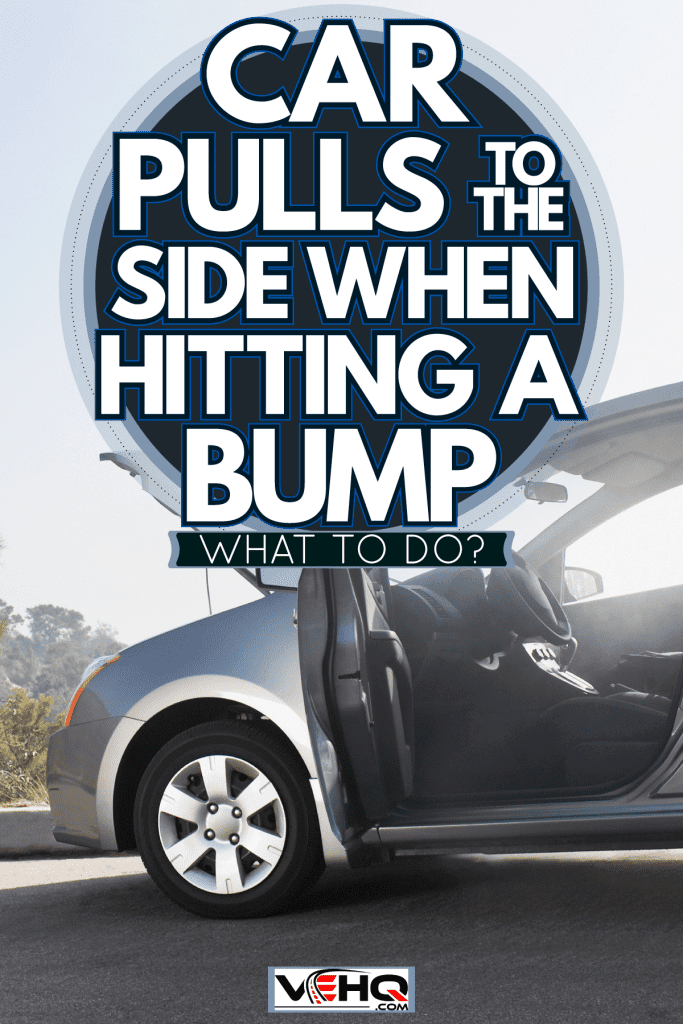
Steering And Suspension
Before we tackle the main issue, here is an overview of the basic parts, functions, and relationships of your car's steering and suspension systems. They are responsible for keeping your vehicle's driving stability and if any of its components are damaged, your car may pull or swerve.
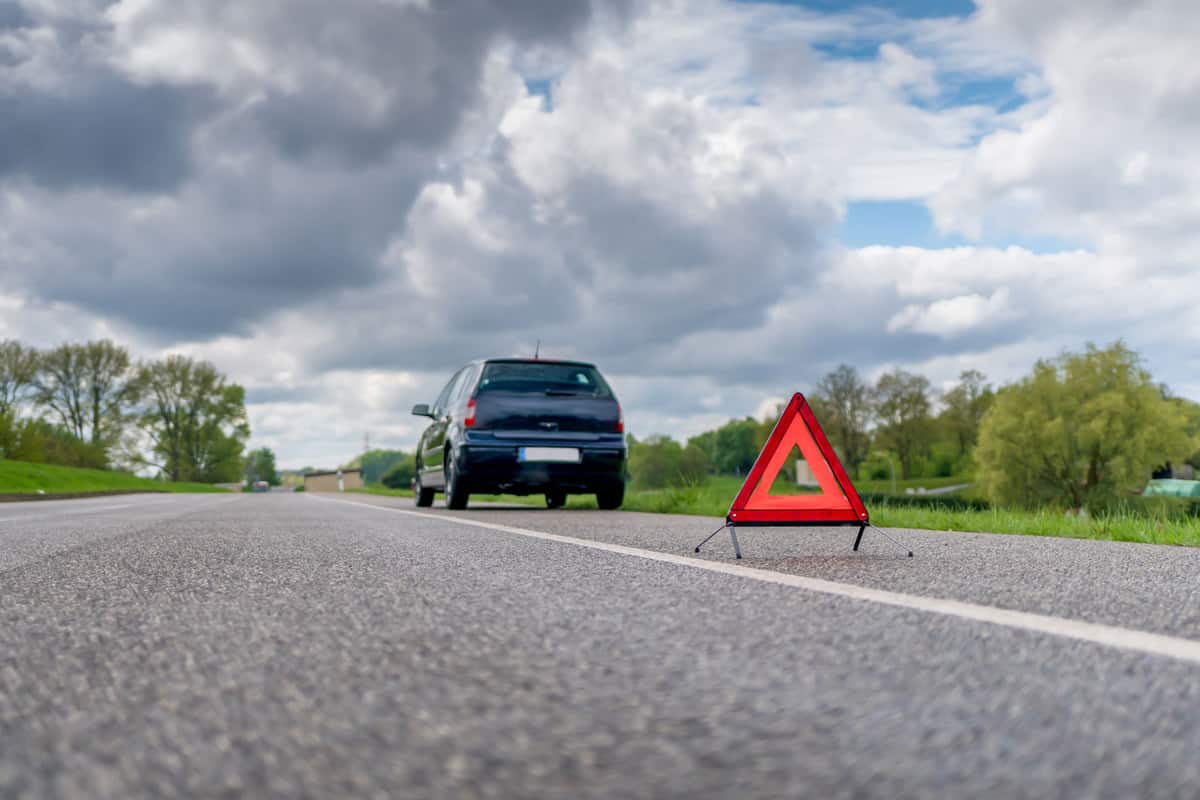
The steering system controls and determines the direction where you intend to navigate the car. To put it simply, it controls the direction of the front wheels.
The suspension system supports the vehicle's body and absorbs movement. They are linked by a series of joints and together, work to create a smooth and comfortable ride.
When your car pulls to one side, and you need to firmly hold the steering wheel in place to keep from swerving, the problem usually lies in the connections between the steering and suspension systems.
Reasons Swerving Occurs
1. Steering And Suspension System
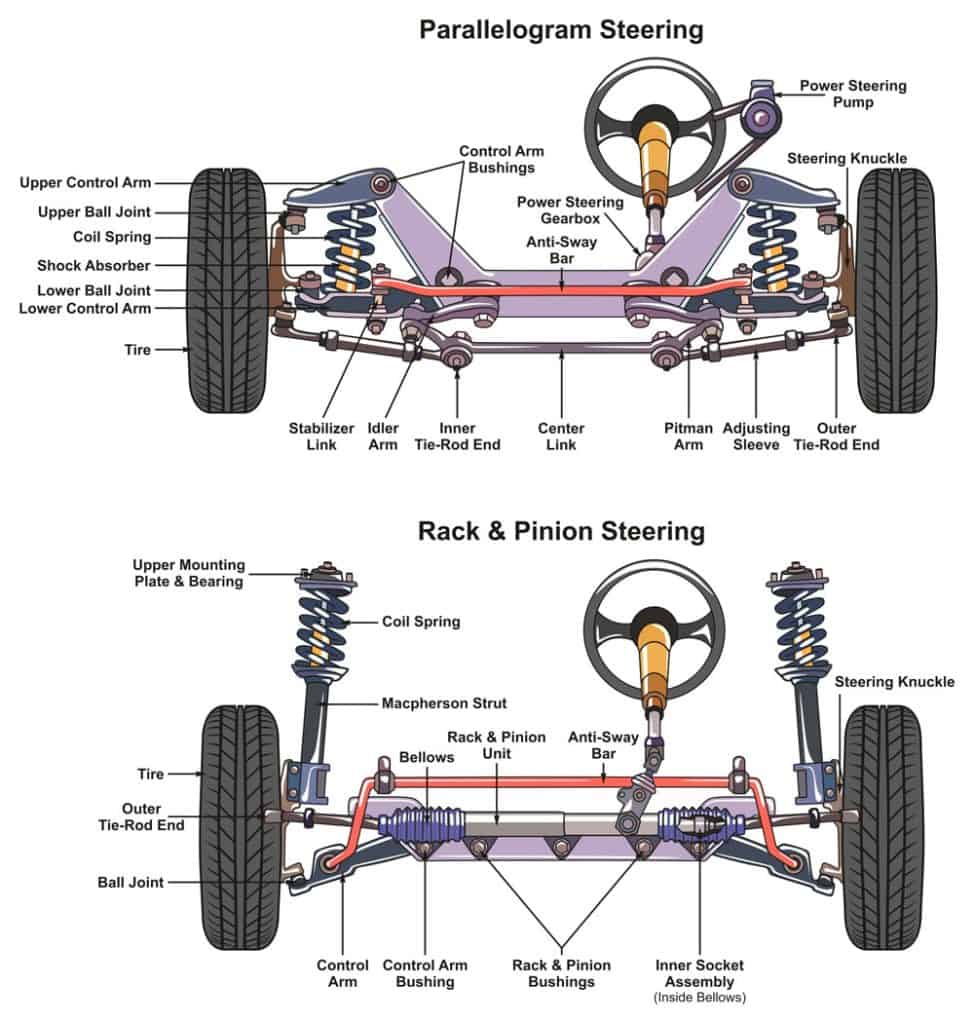
As mentioned, the steering and suspension systems are connected by a series of components. Tie rods, strut bearings, and ball joints function to relay control as well as dampen the impact of movement.
Due to this, they bear the force between your car's body and its wheels, making them the most vulnerable to driving wear and tear. A worn or loose part causes instability and imbalance that initially presents as vibration and steering difficulty.
Eventually, when the condition worsens, your car exhibits a pronounced or significant pull.
2. Wheel Alignment
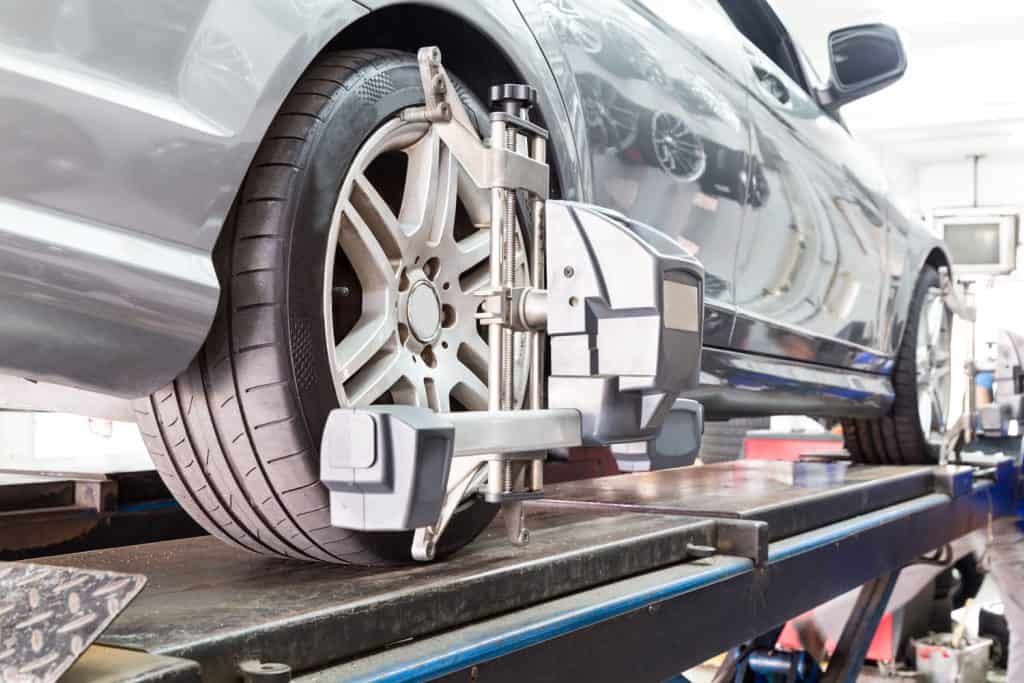
Wheels and axles form a perfect rectangle which results in balance and stability; this constitutes alignment. Roads vary in material and angularity. Hence, the stress or force that your car is subjected to is never uniform or constant.
The parts and components of your vehicle wear out depending on mechanics and function. The age of your car, the usual terrain it drives through, and even your driving manner can alter and affect the wheel alignment and cause the car to pull when hitting a bump.
3. Uneven Tire Wear Or Pressure
Your tires don't wear out evenly, mainly because of poor alignment, damaged or worn mechanical parts, or uneven and harsh road conditions.
This creates a significant difference in how the tires contact the ground and maintain traction. If your front wheels develop an imbalance, they may tend to lag and cause the vehicle to pull to one side.
Sometimes, mere tire pressure causes the identical problem. If the tension of one of your wheels is lower than the rest, it creates more friction that would tend to pull your car in its direction.
4. Brakes
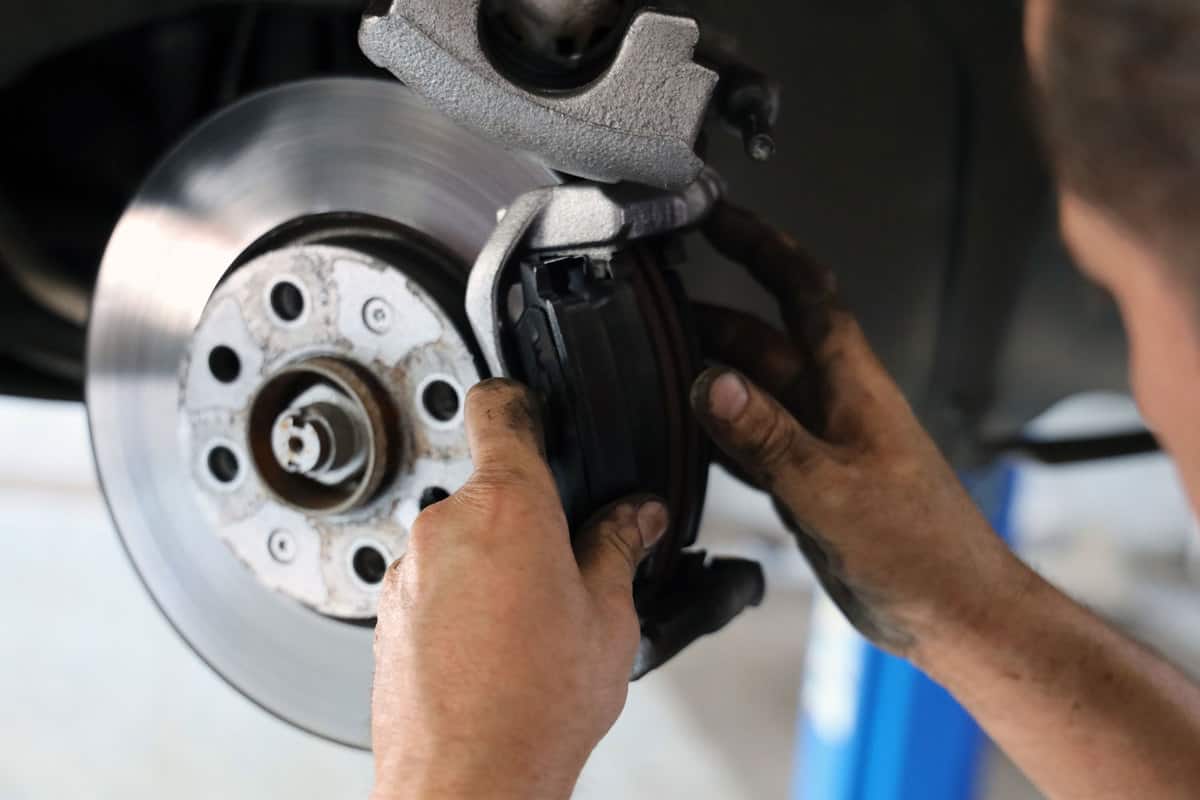
When you hit a bump on the road, your tendency is to apply the brakes. If your vehicle pulls to one side in this situation, a caliper, which applies pressure to the brake pads, might be the reason.
A stuck caliper is in constant contact with the pad, causing the pull you experience. This is a critical condition, especially at high speeds, and must be addressed immediately.
5. Road Condition
Most roads are constructed with a slight slope angled towards the location of the drainage. This makes the middle part of the road slightly higher than the sides.
This condition is another factor that causes uneven tire wear and altered wheel alignment.
What To Do?
Now that we have established the possible reasons why your car pulls to one side, here are the steps to resolve the problem:
Check The Tire Pressure
Before taking your vehicle straight to the garage, check the tire pressure first. Over or under-inflated tires lead to uneven wearing and steering problems.
Identify the recommended tire pressure for your particular car, check and either refill or deflate accordingly. Sometimes this alone could remedy the pull.
Inspect For Uneven Tire Wearing
The combination of prolonged use and various road conditions may cause your tires to wear out unevenly. A simple way to find out is by inspecting the tread of the wheels.
If you notice that the markings are not uniform, meaning the treads are more spent on one side, you may either invert the wheel by putting the outer portion on the inner part. Or, if the tire wear is relatively advanced, it is best to replace them altogether.
Have The Alignment Checked
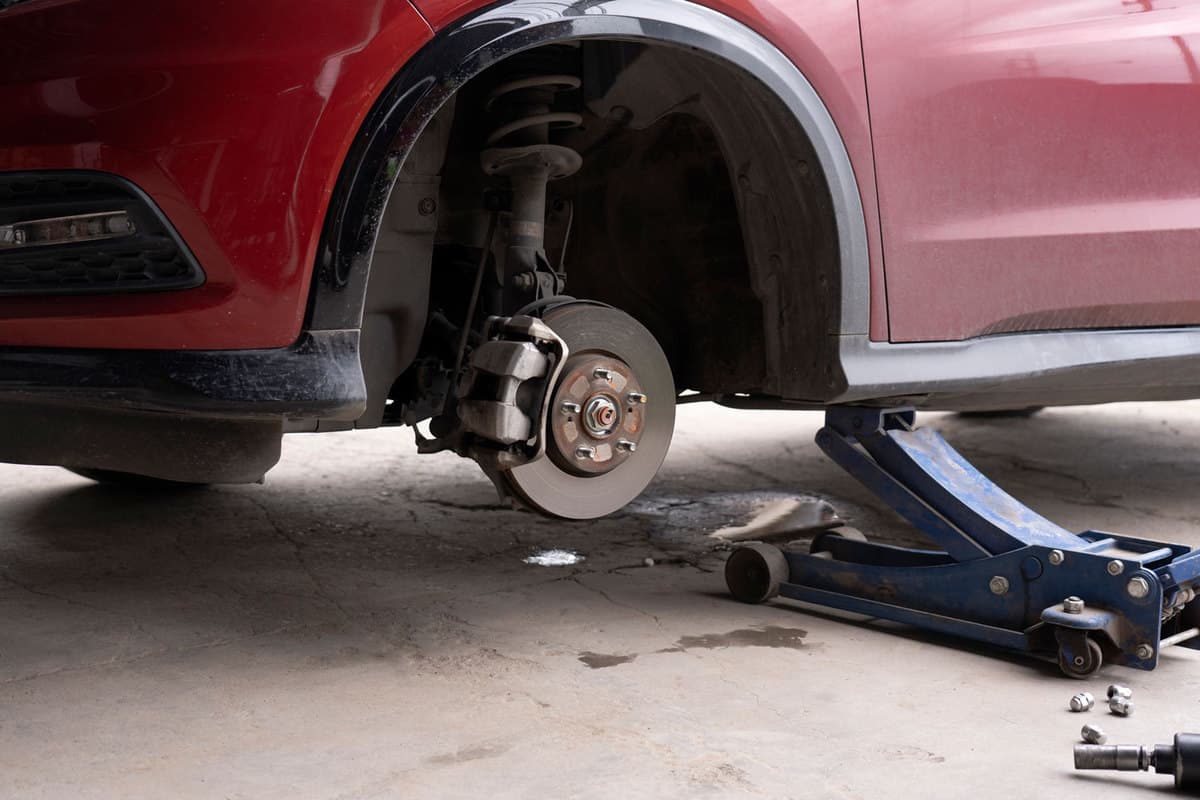
The main and most significant factor that leads to uneven tire wear is improper wheel alignment. Take your vehicle and have the necessary adjustments to the steering and suspension systems.
This process ought to resolve the pulling of the car when you hit a bump. If the problem persists, however, it would be best to perform a complete vehicle inspection.
Have A Complete Vehicle Inspection
If none of the above procedures worked, it's time to have your car serviced and undergo complete inspection and repair. At this point, the problem lies most likely within the braking, steering, or suspension systems.
As mentioned, a malfunctioning caliper may be causing the pull of the car, have them checked and repaired together with the brake pads.
Finally, worn-out components of the connection between the steering and suspension systems may prove to be the root cause of the issue.
Have the service inspect, repair, or replace all faulty parts which include tie rods, strut bearings, and ball joints.
It would be prudent to include adjustments and general maintenance procedures to optimize your car's total performance.
To avoid mechanical problems in the future, we have included some maintenance tips, guidelines, and procedures:
How Often Should You Inspect The Systems Of Your Vehicle?
Tire Pressure
Tire pressure should be checked monthly. Within this period, the tire loses 1 to 2 pounds per square inch (PSI) of pressure. During winter, cold temperatures can cause it to drop by as much as 5 PSI, so regularly monitor your tire pressure during this weather.
The recommended pressure is between 30 to 40 PSI, and if your tires are underinflated, they may wear out faster, cause heavy steering, and increase fuel consumption.
On the other hand, overinflated tires create a bumpy ride and an increased risk of a blowout. Also, it is best to check before taking extended road trips or when your vehicle has not been driven for long periods.
General Condition of the Tires
The general condition of your tires should be inspected once a month as well. Check for tread wear, cuts, bumps, and alignment.
If you regularly drive over bad terrain, live in a cold climate, or cover long distances on a daily basis, inspect them more often. On average usage, a tire will last between 3 and 5 years.
It is best to replace them after this period or earlier, depending on actual mileage, maintenance, and other conditions.
Car Brakes
Your car brakes, which is the main safety feature, should be inspected every six months and replaced every 25,000 to 65,000 miles. The number may differ depending on driving conditions and the actual distance covered.
If, however, you notice squealing or grinding sounds, vibration, or it takes longer to stop when applying your brakes, have them serviced right away.
Wheel Alignments
Wheel alignments should be done every 2 to 3 years. Your car will run smoother and handle better.
Because of the stability, the steering and suspension parts will last longer, the lifespan of the tires is increased and fuel efficiency is optimized.
Have the alignment checked yearly, if you drive regularly over uneven terrain, or go on off-road trips. In case your car hits a deep pothole, bumps into a structure, or gets into an accident, have it checked immediately.
Suspension and Steering Systems
The suspension and steering systems should be serviced every 50,000 miles or about 80,000 kilometers. It is best to have it inspected when you get your tires replaced or your brakes serviced.
Some mechanical issues may arise if there are worn components in your suspension and steering system. A bumpy ride, swerving or pulling, poor steering, noises, or vibrations may all indicate a problem. Have your vehicle checked and repaired to prevent more damage.
In Closing
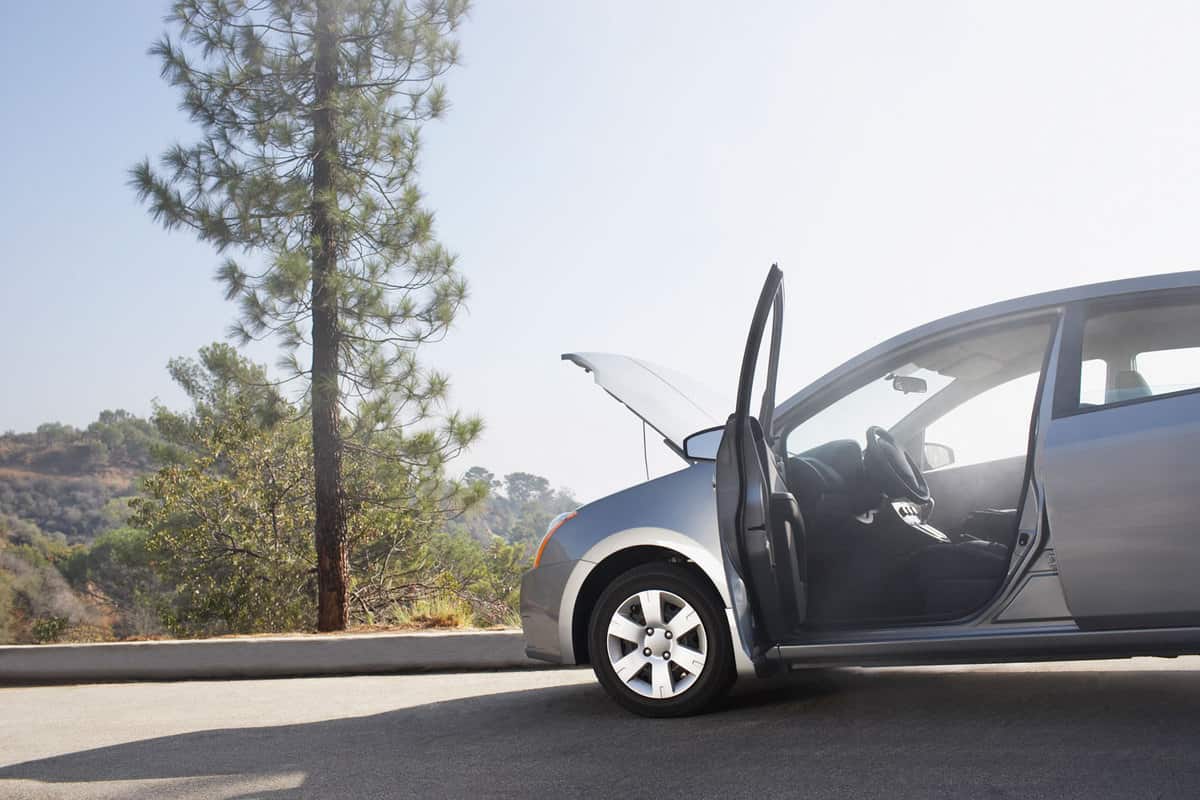
There are several possible reasons why your car pulls to one side when hitting a bump. The bottom line is it compromises the control and endangers the passengers as well as other cars and pedestrians. We hope the article helped you resolve the problem. Safe motoring!
What Should The Tire Pressure Be On A Kia Sorento? [And How To Check It]
